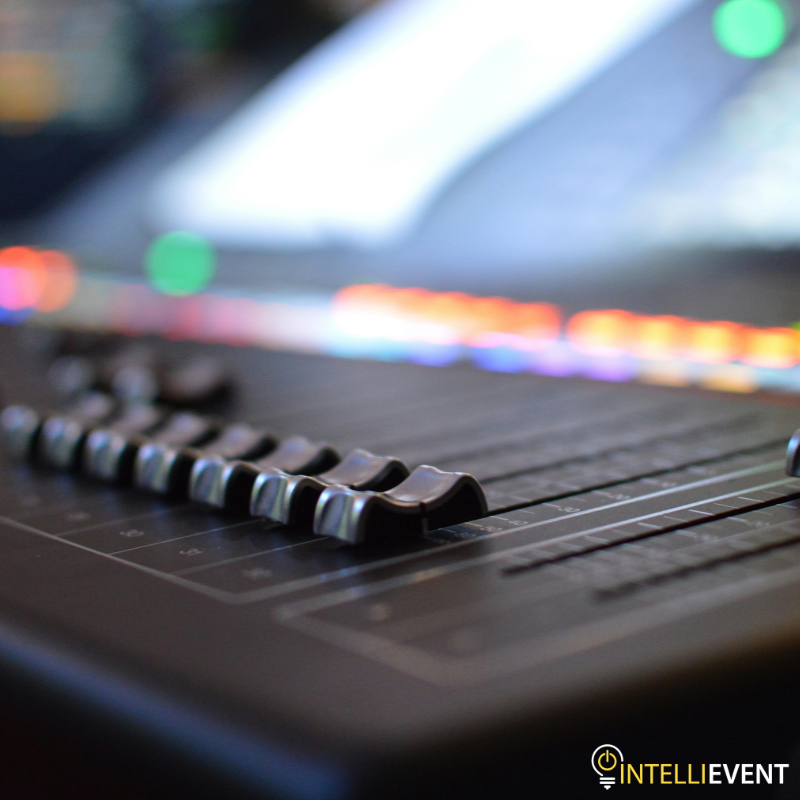The common pitfalls when working with audio visual charlotte nc
Understanding the Incorporation of Audio Visual Modern technology in Today's Educational Environments
The assimilation of audio-visual modern technology in educational settings has changed the mentor and finding out procedure. Educators now have access to devices that satisfy different discovering styles, enhancing pupil interaction and collaboration. The unification of these technologies offers both opportunities and obstacles. Comprehending how to successfully implement these devices is important. What methods can teachers use to make best use of the advantages of audio-visual technology in their classrooms?
The Evolution of Audio-Visual Innovation in Education
As educational demands developed over the decades, audio-visual technology undertook significant improvements that improved the learning atmosphere. Devices such as film projectors and slide programs were the primary means of integrating visual components right into classrooms. These very early innovations supplied instructors with the capability to existing information dynamically, yet they were limited in access and interactivity.
With the development of video clip cassette recorders in the 1970s, class began to incorporate recorded lessons, expanding the range of educational resources. The introduction of individual computers in the 1980s further revolutionized this landscape, allowing for the production of multimedia discussions and interactive discovering experiences.
The increase of the net in the 1990s marked a turning point, allowing real-time access to a wide range of audio-visual products. Today, electronic tools such as interactive whiteboards and on the internet understanding platforms continue to enhance the instructional experience, fostering involvement and cooperation amongst learners.
Advantages of Audio-Visual Equipment for Diverse Knowing Styles
Audio-visual devices play an important function in satisfying varied discovering designs by boosting aesthetic knowing and boosting auditory interaction. By including photos, videos, and audio, these technologies produce a more comprehensive academic environment. This multifaceted approach allows teachers to deal with the different choices and demands of pupils efficiently.
Enhancing Visual Knowing
Interaction in the discovering procedure is substantially enhanced with the usage of audio-visual devices, satisfying numerous learning designs. These tools, such as videos, infographics, and interactive presentations, provide visual stimuli that aid comprehension and retention. Visual learners, in certain, gain from the unification of pictures and animations, which can simplify complicated ideas and improve understanding. Furthermore, audio-visual resources can show real-world applications, making finding out a lot more relevant and engaging. By integrating shade, activity, and audio, teachers can create a vibrant learning setting that records students' interest and cultivates deeper cognitive links. Eventually, the strategic use of audio-visual innovation not just supports visual learning yet likewise enriches the overall instructional experience for diverse learners.
Improving Auditory Interaction
A significant advantage of incorporating audio-visual tools in education is their capability to boost acoustic interaction amongst pupils. These devices, which incorporate multimedia presentations, podcasts, and interactive audio components, satisfy different discovering designs, especially profiting acoustic learners (audio visual charlotte nc). By integrating sound and narrative, educators can produce immersive experiences that capture students' interest and strengthen understanding. This involvement is vital, as it cultivates a much deeper understanding of the product and advertises retention. Furthermore, audio-visual tools can promote collaborative knowing environments, motivating students to take part in discussions and share their insights. Ultimately, the consolidation of audio-visual technology not just supports acoustic engagement but likewise enhances the general instructional experience, making finding out more vibrant and efficient for all trainees
Enhancing Interaction Through Interactive Understanding

Gamification components, such as quizzes and simulations, can improve motivation and retention, making learning extra delightful and reliable. These methods not only stimulate cognitive engagement yet likewise accommodate varied discovering designs, making certain that all pupils can get involved meaningfully. As a result, interactive learning environments promote a feeling of area and belonging, eventually causing enhanced scholastic results. Via the integration of audio aesthetic innovation, instructors can transform traditional class into lively areas where pupils thrive and actively shape their educational trips.
Linking Theory and Exercise With Multimedia Resources
Multimedia sources act as a critical web link between academic ideas and sensible application in academic settings. By boosting involvement, helping with collaborative knowing experiences, and sustaining diverse knowing styles, these devices create an extra inclusive and dynamic knowing environment - audio visual charlotte nc. This approach not just cultivates much deeper understanding yet also prepares students for real-world challenges

Enhancing Engagement Through Multimedia
Engagement in educational settings substantially enhances when instructors incorporate multimedia resources right into their mentor strategies. The use of videos, podcasts, and interactive discussions enhances the learning experience, allowing pupils to connect with the material on multiple degrees. Multimedia resources deal with different learning designs, supplying visual, acoustic, and kinesthetic stimuli that can hold trainees' attention better than conventional lecture approaches. Furthermore, these resources can simplify intricate ideas, making them a lot more accessible and memorable. By incorporating multimedia, teachers can develop a dynamic class environment that cultivates inquisitiveness and inspires students. Ultimately, the critical use audio-visual innovation serves to bridge the gap in between theoretical expertise and sensible application, enhancing the educational experience for both trainers and pupils.
Promoting Collaborative Discovering Experiences
Various research studies show that collective knowing experiences markedly enhance trainee outcomes when incorporated with multimedia resources. Multimedia tools facilitate interaction among trainees, enabling them to involve in problem-solving and important thinking collectively. By making use of video conferencing, collective systems, and interactive discussions, instructors develop environments favorable to teamwork and shared understanding. These modern technologies make it possible for students to connect their ideas efficiently and get prompt feedback, fostering a much deeper understanding of the subject issue. Additionally, multimedia sources can present complicated concepts in more digestible layouts, advertising conversation and collaboration. Consequently, the mix of collaborative discovering and audio-visual modern technology not just enhances the academic experience yet also prepares trainees for real-world synergy dynamics, emphasizing the importance of collaboration and collective understanding building and construction.
Sustaining Diverse Discovering Styles
While standard teaching approaches typically cater to a minimal variety of discovering choices, the assimilation of audio-visual modern technology uses a much more inclusive strategy to education and learning. By using multimedia sources such as video clips, interactive simulations, and digital presentations, educators can attend to more info various learning designs, including aesthetic, auditory, and kinesthetic. This versatility enables distinguished instruction, allowing students to engage with content in ways that resonate with their individual preferences. Additionally, audio-visual tools can help with deeper understanding by providing several depictions of intricate ideas. As a result, trainees that might have problem with traditional approaches can find alternative paths to success, cultivating an extra fair learning atmosphere that supports academic success for all learners.
Challenges in Applying Audio-Visual Innovation
Audio-visual modern technology holds wonderful pledge for improving educational experiences, its implementation usually encounters significant difficulties. One main concern is the monetary worry related to purchasing and maintaining such devices, which can stress budget plans, specifically in underfunded institutions. In addition, insufficient training for instructors can hinder effective assimilation, leaving them ill-prepared to use the modern technology totally. Technical concerns, such as software malfunctions and compatibility issues, may also interrupt lessons and discourage both teachers and students. Differing levels of student accessibility to modern technology outside the classroom can develop differences in discovering chances. The possibility for over-reliance on technology might take away from crucial mentor techniques, ultimately limiting the academic experience. Addressing these obstacles requires a complete strategy, consisting of appropriate funding, expert advancement, and fair accessibility to sources, to guarantee that audio-visual modern technology can be leveraged properly in today's educational setups.
Ideal Practices for Integrating Technology in the Class

In addition, fostering an interactive setting with collaborative devices encourages student involvement and involvement. Making use of varied audio-visual sources satisfies numerous finding out styles, fitting visual, acoustic, and kinesthetic learners. Consistently evaluating the influence of modern technology on student knowing aids instructors fine-tune their strategies and adjust to changing requirements. Entailing students in the option of innovation advertises possession and motivation. By sticking to these ideal practices, instructors can create a dynamic class ambience that successfully incorporates modern technology and boosts the instructional experience for all pupils.
The Future of Audio-Visual Modern Technology in Education
As classrooms significantly accept modern technology, the landscape of audio-visual tools in education and learning proceeds to evolve (audio visual charlotte nc). Future developments are expected to concentrate on greater interactivity and personalization, enabling teachers to customize finding out experiences to specific pupil demands. Innovations such as enhanced truth (AR) and virtual reality (VR) will likely give immersive understanding environments, boosting trainee involvement and understanding
Moreover, synthetic knowledge (AI) is poised to play a significant function in audio-visual innovation by using real-time feedback and flexible discovering paths. This combination may aid educators identify and deal with pupil challenges extra effectively. Cloud-based systems will certainly assist in much easier accessibility to sources and partnership amongst students and educators, despite area.
In enhancement to these technological advances, expert development for teachers will certainly be essential, guaranteeing they are furnished to use these tools efficiently. On the whole, the future of audio-visual modern technology in education and learning assures to create more vibrant, inclusive, and impactful understanding experiences.
Often Asked Concerns
Exactly How Can Educators Choose the Right Audio-Visual Equipment for Their Class?
Choosing appropriate audio-visual tools requires educators to assess their academic goals, think about student demands, examine available innovation, and look for recommendations from peers or experts, making sure devices efficiently enhance discovering and engagement within their details class setting.
What Budget plan Factors to consider Are There for Executing Audio-Visual Modern Technology?
Budget factors to consider for executing audio-visual modern technology include preliminary acquisition costs, upkeep costs, training for team, and potential software application licensing costs. Furthermore, long-lasting financial investment in updates and substitutes ought to additionally be factored into economic preparation.
Are There Particular Training Resources for Teachers on Audio-Visual Equipment?
Lots of establishments use training resources for teachers on audio-visual devices, consisting of on-line courses, workshops, and training overviews. These sources intend to enhance educators' abilities and confidence in successfully integrating modern technology right into their mentor methods.
Exactly how Do We Measure the Efficiency of Audio-Visual Modern Technology in Discovering?
Measuring the effectiveness of audio-visual modern technology in learning involves reviewing student involvement, understanding, retention prices, and total academic performance. Studies, analyses, and observational studies can supply beneficial insights into its influence on academic outcomes.
What Are Typical Mistaken Beliefs Concerning Audio-Visual Technology in Education And Learning?
Common mistaken beliefs about audio-visual technology in education include the idea that it ensures interaction and discovering end results, in addition to the assumption that all pupils benefit just as, ignoring individual learning choices and demands.